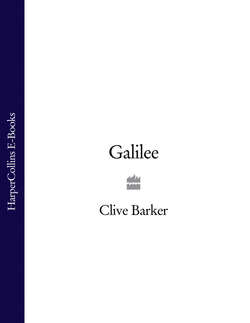Читать книгу Galilee - Clive Barker, Clive Barker - Страница 31
iv
ОглавлениеLet me now give you a brief guided tour to the Geary residences, since so many of the exchanges I will be reporting occur there. Over the years the family has accrued large amounts of real estate and, because they never needed to realize the capital, seldom sold anything. Sometimes they renovated these properties, and occupied them. But just as often Geary houses have been kept for decades—regularly cleaned and redecorated—without any member of the family stepping over the threshold. As of this writing, I know of houses and apartments the family owns in Washington, Boston, Los Angeles, Montana, Louisiana, South Carolina, and Hawaii. In Europe they own properties in Vienna, Zurich, London, and Paris; and further afield, in Cairo, Bangkok, and Hong Kong.
For now, however, it’s the New York residences that I need to describe in a little detail. Mitchell has a pied à terre on the fringes of Soho, far more extravagantly appointed inside, and far more obsessively guarded, than its undistinguished exterior would suggest. Margie and Garrison occupy two floors close to the top of the Trump Tower, an apartment which commands extraordinary views in all directions. The purchase was Margie’s suggestion (at the time it was some of the most expensive space in the world, and she liked the idea of spending so much of Garrison’s money) but she never really warmed to the apartment, for all its glamour. The decorator she hired, a man called Jeffrey Penrose, died a month after finishing his transformation, and posthumous articles about him mentioned the Trump Tower apartment as his “last great creation; like the woman who employed him—kitschy, glitzy, and wild.” So it was; and so was Margie, back then. The years since haven’t been kind, however. The glitter looks tawdry now; and what seemed witty in the eighties has lost its edge.
The one truly great Geary residence in the city is what everyone in the family refers to as “the mansion; a vast, late nineteenth century house on the Upper East Side. The area’s called Carnegie Hill, but it might just as well have been named for the Gearys; Laurence was in residence here twenty years before Andrew Carnegie built his own mansion at 5th and 91st. Many of the houses surrounding the Geary residence have been given over to embassies; they’re simply too large and too expensive for one family. But Cadmus was born and raised in the mansion, and never once contemplated the notion of selling it. For one thing, the sheer volume of possessions the house contains could not be transferred to a more modestly scaled space: the furniture, the carpets, the clocks, the objets d’art; there’s enough to found a sizable museum. And then there are the paintings, which unlike much of the other stuff were collected by Cadmus himself. Big canvases, all of them; and all by American painters. Magnificent works by Albert Bierstadt, Thomas Cole, and Frederick Church, enormous paintings of the American landscape at its most awe inspiring. To some, these works are regressive and rhetorical; the products of limited talents overreaching themselves in pursuit of a sublime vision. But hanging in the mansion, sometimes occupying entire walls, the paintings have an undeniable authority. In some ways they define the house. Yes, it’s dark and heavy in there; sometimes it seems hard to draw breath, the air is so dense, so stale. But that’s not what people remember about the mansion. They remember the paintings, which almost look like windows, letting onto great, untamed wildernesses.
The house is run by a staff of six, who work under Loretta’s ever judgmental eye. However hard they labor, however, the house is always bigger than they can manage. There’s always dust gathering somewhere; they could work twenty-four hours a day, seven days a week, and still not tame the enormity of the place.
So: that’s the New York City residences. Actually, I haven’t told you everything. Garrison has a secret place that even Margie doesn’t know he owns, but I’ll describe that to you when he visits it, along with an explanation as to why he’s obliged to keep its existence to himself. There’s also a house upstate, near Rhinebeck, but that also has a significant place in the narrative ahead, so I’ll delay describing it until then.
The only other residence I want to make mention of here is a long way from New York City, but should be mentioned here, I think, because in my imagination it forms a trinity with the mansion and L’Enfant. That house is a far more humble dwelling than the other two. In fact it’s probably the least impressive of any of the major residences in this story. But it stands a few yards from the blue Pacific, in a grove of palm’ trees, and for the lucky few who’ve spent a night or two beneath its roof, it evokes Edenic memories.
That house we’ll also come to later, and to the secrets it contains, which are sweatier than anything Garrison hides away in his little bolthole, and yet so vast in their significance that they would beggar the skills of the men who painted the wildernesses in the mansion. We are a while away from being there, but I want you to have the image of that paradisiacal spot somewhere in your head, like a bright piece of a jigsaw puzzle which doesn’t seem to fit in the scheme, but must be held on to, contemplated now and again, until its significance becomes apparent, and the picture is understood as it would not have been understood until that piece found its place.
